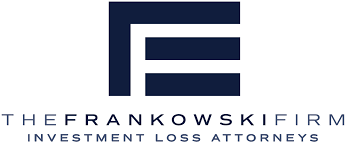Title: Common Types of Investment Fraud: How to Spot Them
As an investor, it’s essential to be aware of the potential risks and pitfalls that come with navigating the world of financial markets. Unfortunately, investment fraud is a prevalent issue that can have devastating effects on individuals and institutions alike. At the Frankowski Firm, we have dedicated our practice to holding wrongdoers accountable and seeking justice for those who have suffered financial injustices.
In this blog post, we’ll delve into some common types of investment fraud and provide insights on how to spot them.
1. Ponzi Schemes: Ponzi schemes are perhaps one of the most well-known forms of investment fraud. In these schemes, funds from new investors are used to pay returns to earlier investors, creating the illusion of a profitable investment. However, as the scheme grows, it becomes unsustainable, leading to significant losses for those involved. Signs of a Ponzi scheme include consistently high and steady returns, reluctance to provide detailed information about the investment strategy, and a lack of transparency regarding the use of funds.
2. Pump and Dump Schemes: In a pump and dump scheme, fraudsters artificially inflate the price of a stock through misleading or false statements, creating a buying frenzy. Once the stock price reaches a peak, the fraudsters sell off their shares, causing the stock price to plummet, leaving unsuspecting investors with significant losses. Red flags for pump and dump schemes include aggressive and unsolicited stock promotions, exaggerated claims about the company’s prospects, and insider selling by company executives.
3. Unsuitable Investments: Brokers and financial advisors have a duty to recommend investments that are suitable for their clients’ financial situation, risk tolerance, and investment objectives. When advisors recommend investments that are unsuitable, it can lead to substantial financial harm. Signs of unsuitable investments include investments that are overly risky for the investor’s profile, excessive trading activity that generates high commissions for the broker, and lack of consideration for the investor’s financial goals.
4. Account Churning: Churning occurs when a broker excessively trades securities in a client’s account to generate commissions, without regard for the client’s investment goals. This unethical practice can erode a client’s investment portfolio and lead to substantial financial losses. Warning signs of account churning include frequent and unexplained trades, high levels of turnover in the account, and minimal communication from the broker regarding the investment strategy.
5. Misrepresentations and Omissions: Fraudulent brokers may engage in misrepresentations or omissions of material facts about an investment to entice investors to purchase or hold onto securities. Investors should be wary of exaggerated claims about potential returns, failure to disclose risks associated with the investment, and withholding essential information that could impact investment decisions.
At the Frankowski Firm, we understand the complexities of investment fraud and are committed to helping clients who have fallen victim to fraudulent practices. If you believe you have been the victim of broker fraud or misconduct, don’t hesitate to reach out to us. Our experienced investment fraud attorneys have a proven track record of obtaining large awards for financial injustices and are prepared to fight for your rights.
By staying informed about common types of investment fraud and being vigilant in spotting potential red flags, investors can protect themselves from falling prey to fraudulent schemes. Remember, if something seems too good to be true, it’s essential to conduct thorough due diligence and seek professional guidance when making investment decisions. Your financial security is of utmost importance, and we’re here to help you safeguard it.
